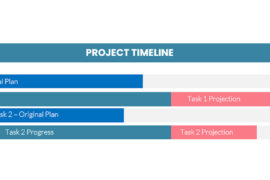 In a remarkable number of companies I visit, fledgling internal project organizations revert towards hierarchical structures. The organization becomes managed through the department or organizational structure and project managers become attached to that structure rather than an independent project office. The PMO devolves to a reporting function and in this modern era of cost cutting becomes a prime target for evaporating altogether.
In a remarkable number of companies I visit, fledgling internal project organizations revert towards hierarchical structures. The organization becomes managed through the department or organizational structure and project managers become attached to that structure rather than an independent project office. The PMO devolves to a reporting function and in this modern era of cost cutting becomes a prime target for evaporating altogether.How can this happen? After all, those of us in the project management industry tend to think of project management as most critical in difficult times and there is plenty of evidence to show how projectized organizations generate tremendous levels of efficiency.
To figure this out, it’s important to think of how organizations come to be in the first place.
Organizations usually get started from an entrepreneurial spirit. Company founders use family or trusted advisors to take over key elements of the company because it’s too big to do alone. This historic perspective continues into modern day accounting and business management. Organizations are traditionally organized by function, not by result. Look at any standard accounting chart of accounts and you’ll see department oriented thinking. Look at standard budgeting and it is department organized.
So department heads have traditionally had ultimate power, thinking of themselves as the heads of their own companies within companies. That’s great right up to the point where the products the company needs to create must cross these departments in order to be completed. And it is in answer to that challenge that today’s matrix organization came about.
The Matrix organization theory is relatively new but has been almost universally accepted in organizations that do projects. The idea is that projects move across departments. The power in the organization is now shared in some manner. Department heads are still responsible for their people but the project office is responsible for producing the result. Many modern day managers have grown up in world where they’ve only experienced Matrix structures in the organizations they’ve worked in. But, is matrix management automatically the most effective path? Opinions vary.
In a perfect world, the two axes of the matrix are intended to balance each other out. We’d expect that an organization that is completely oriented to the organizational axis of the matrix would have very happy employees who were well taken care of, highly trained and well compensated but would not get a lot of project throughput. Conversely, we’d expect that an organizations that is completely oriented to the project axis of the matrix would have lots of projects being completed but would be burning out staff on a regular basis, having lots of turnover and ultimately would lose its key resources. The idea of a matrix organization is that it is conflict by design. In a matrix organization we expect the two axis to push against each other with the intent being that we will find a perfect balance.
There are two big problems with this assumption however. First, not all people are created equal. Every organizations has some managers who are more articulate, more experience more forceful, more networked, better at negotiating and better at internal politics than others. Those people who are less experienced, less connected and ultimately less powerful will suffer by comparison. The second challenge is much more significant. The traditional position of the PMO is often one with lots of responsibility but little authority. Authority rests almost always with the organizational aspect of the matrix. So, when an organization is put under pressure (as happens in a tough economy) those people in authority are pressed to protect themselves. The result is often the exact opposite of what would be good for the organization.
In the economic pressures of the last couple of years, we’ve seen a number of organizations where the role of the PMO has been degraded. It’s exactly the opposite of what you’d expect in a challenging economy. We’d expect that this would be the time where the most throughput possible would be the incentive and, to be sure, in some companies that’s the case. But, in some organizations, the pressure on the organizational department managers is to grab back as much authority as possible. These groups create their own project management groups that are specific to their departments thus paying lip service to the project management requirement but at the same time removing the most powerful benefit to the organization overall: the ability to manage work across departments.
This is most common in the largest of organizations where the size of the matrix is tough to comprehend at the best of times. The end result is a weaker and weaker PMO until in the end, the PMO is, in some cases, dissolved completely in favour of “department PMO’s” which, of course manage projects only from a hierarchical perspective; that is to say, only for their own departments.
It’s a complete return to silo management by department.
If this is something you’re experiencing and you’re responsible for the project aspect of the matrix, there are a few things you can do.
First, market, market, market. Communications from the PMO are critical. We’ve always said this to our clients but selling the PMO shouldn’t ever stop once the PMO is established. An organization with lots of responsibility and little authority needs to lobby for its position forever. It’s just part of a good PMO. So, create a blog, a collaborative workspace or a website and start pitching your benefits to the organization straight away.
Next, keep your friends close but your enemies closer. It’s an old expression but it holds true today. Make sure your portfolio selection process or your project prioritization process includes those very department heads who feel they might become disenfranchised. Making sure that people in authority don’t feel left out can eliminate a huge risk to the PMO.
Finally, become Switzerland. Being the facilitator of portfolio meetings puts you one level beyond inter-department rivalry and makes you the neutral territory on which departments can negotiate. Having a neutral territory somewhere which prides itself on its neutrality rather than an organization which is looking for authority of its own is something everyone can commit to.
Maintaining a level of balance between the organizational and project axes of your matrix organization is essential if you don’t want to risk being returned to a silo organization.




